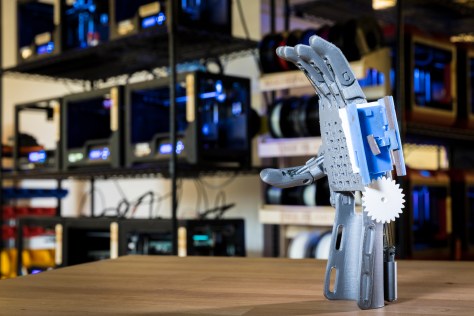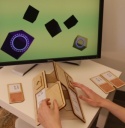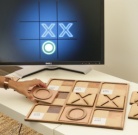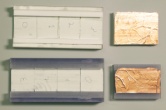Wireless Analytics for 3D Printed Objects: Vikram Iyer, Justin Chan, Ian Culhane, Jennifer Mankoff, Shyam Gollakota UIST, Oct. 2018 [PDF]
We created a wireless physical analytics system works with commonly available conductive plastic filaments. Our design can enable various data capture and wireless physical analytics capabilities for 3D printed objects, without the need for electronics.
We make three key contributions:
(1) We demonstrate room scale backscatter communication and sensing using conductive plastic filaments.
(2) We introduce the first backscatter designs that detect a variety of bi-directional motions and support linear and rotational movements. An example is shown below

(3) As shown in the image below, we enable data capture and storage for later retrieval when outside the range of the wireless coverage, using a ratchet and gear system.

We validate our approach by wirelessly detecting the opening and closing of a pill bottle, capturing the joint angles of a 3D printed e-NABLE prosthetic hand, and an insulin pen that can store information to track its use outside the range of a wireless receiver.

Selected Media
6 of the most amazing things that were 3D-printed in 2018 (Erin Winick, MIT Technology Review, 12/24/2018)
Researchers develop 3D printed objects that can track and store how they are used (Sarah McQuate), UW Press release. 10/9/2018
Assistive Objects Can Track Their Own Use (Elizabeth Montalbano), Design News. 11/14/2018
People
Students
Vikram Iyer
Justin Chan
Ian Culhane
Faculty
Jennifer Mankoff
Shyam Gollakota
Contact: printedanalytics@cs.washington.edu

Links
Press Release
Extended Video
UW Networks & Mobile Systems Lab
Printed Analytics











 A variety of 3D-printed upper-limb assistive technology devices designed and produced by volunteers in the e-NABLE community. Photos were taken by the fourth author in the e-NABLE lab on RIT’s campus.
A variety of 3D-printed upper-limb assistive technology devices designed and produced by volunteers in the e-NABLE community. Photos were taken by the fourth author in the e-NABLE lab on RIT’s campus.

















